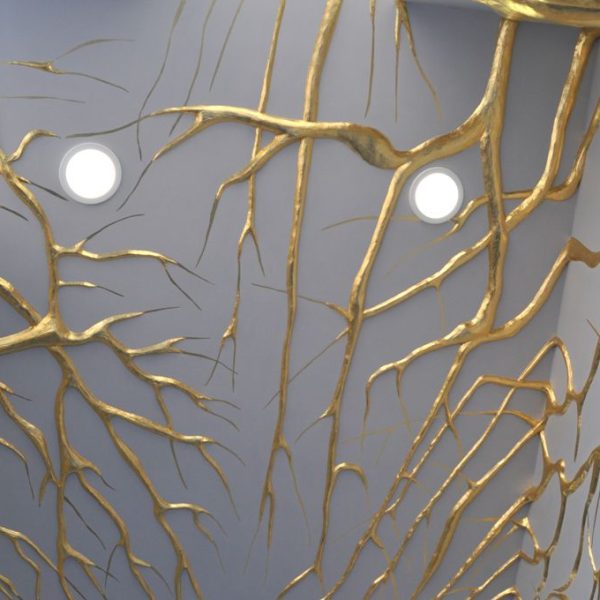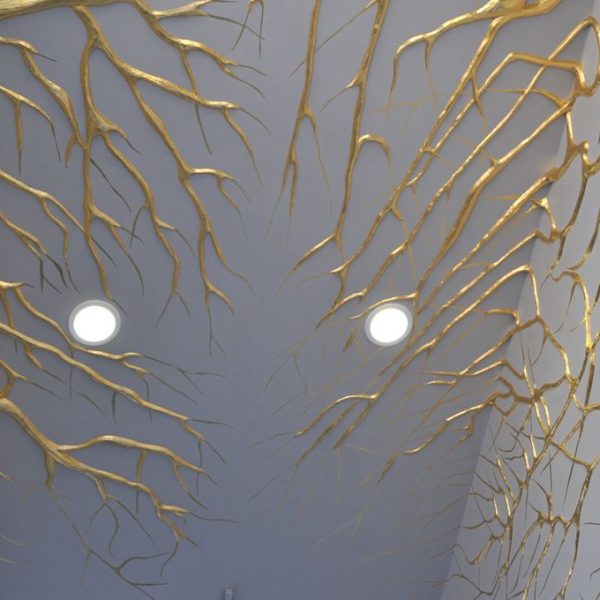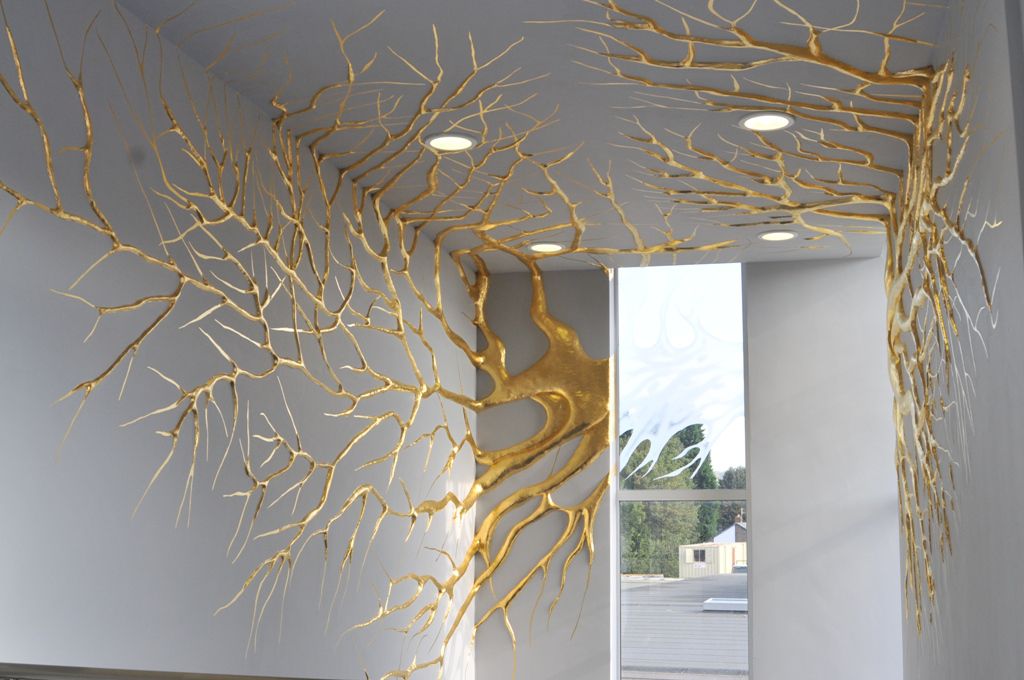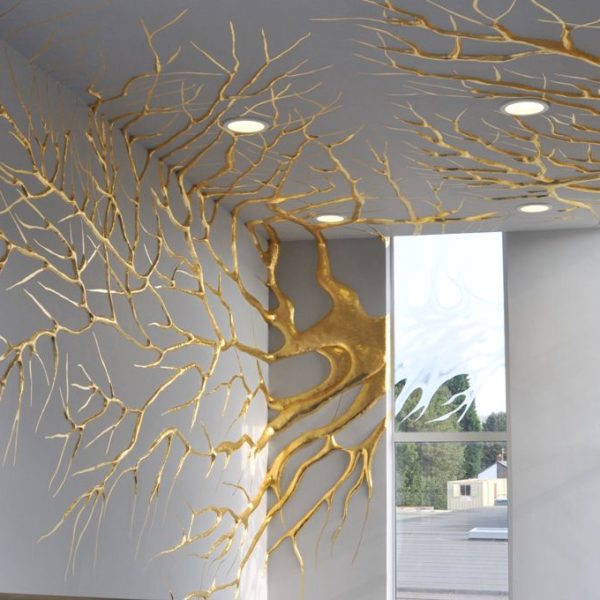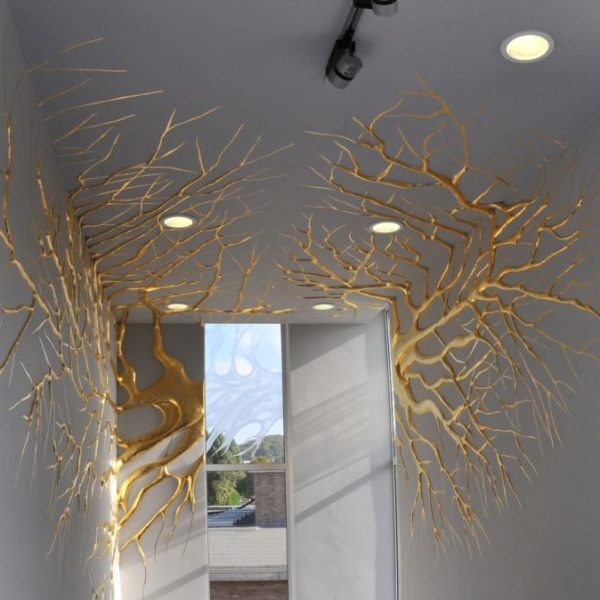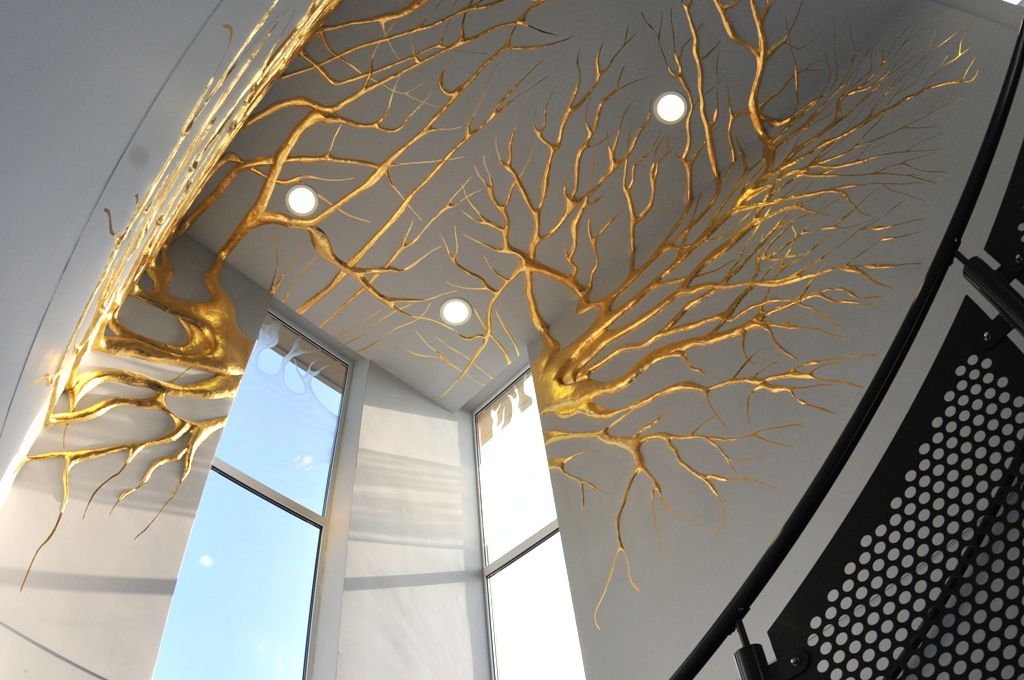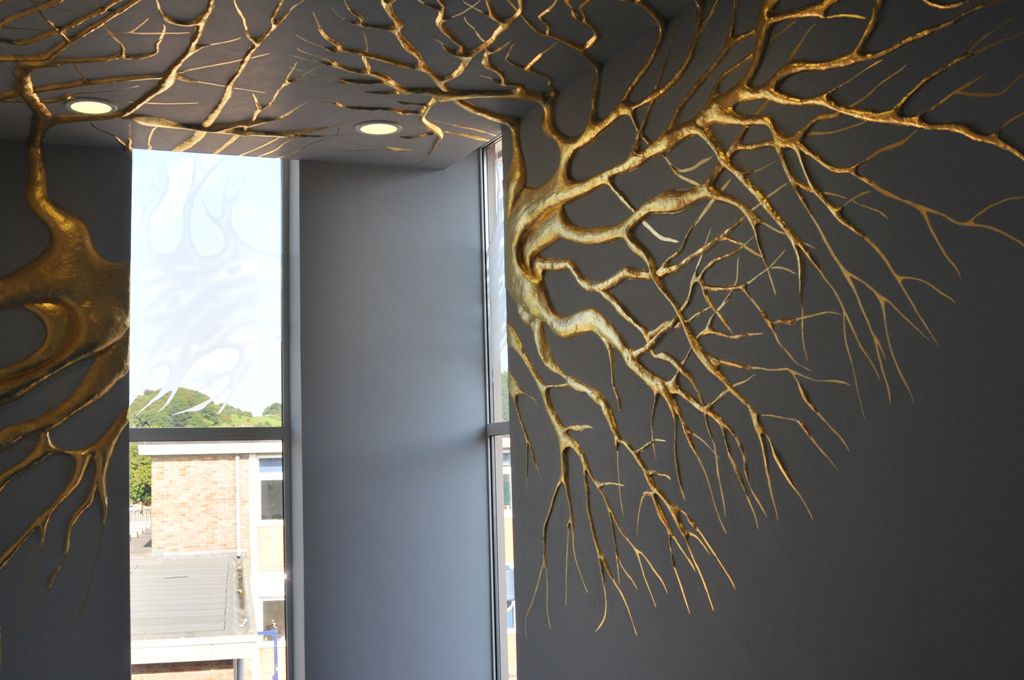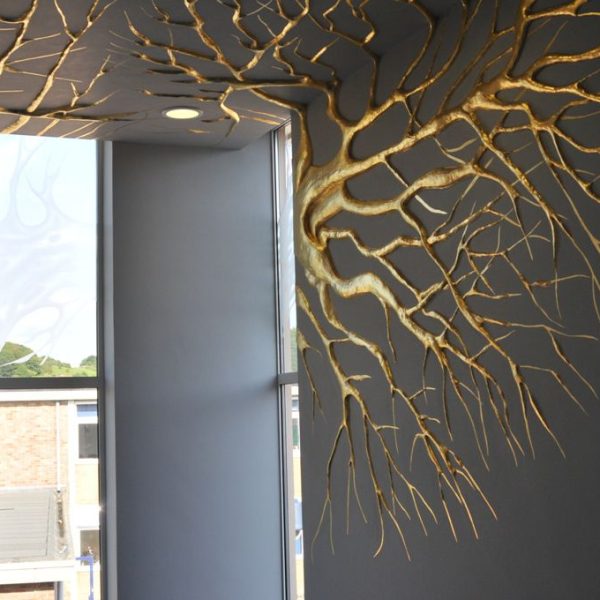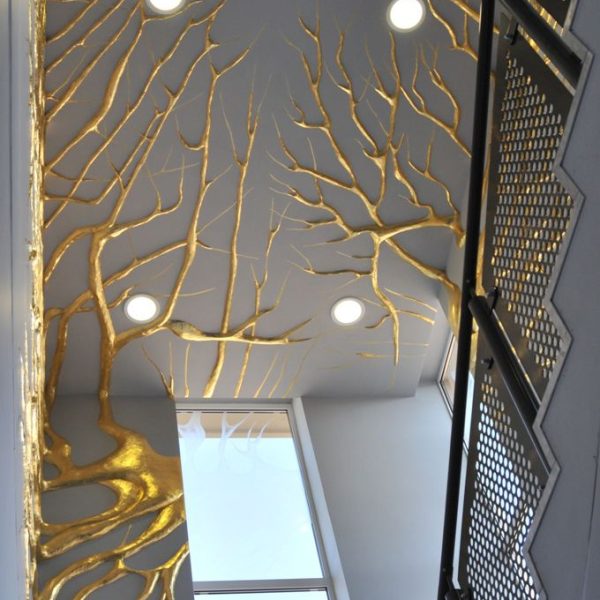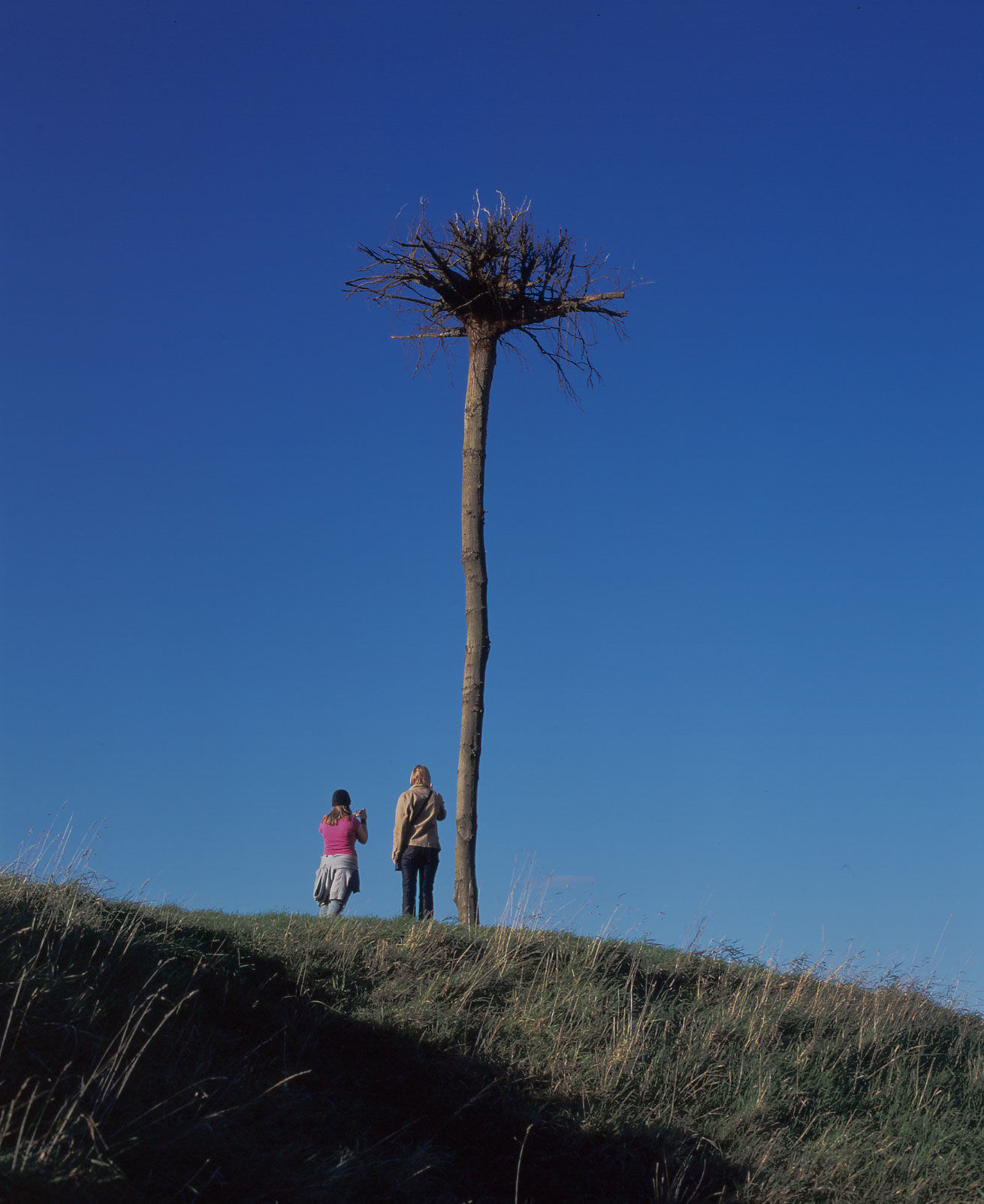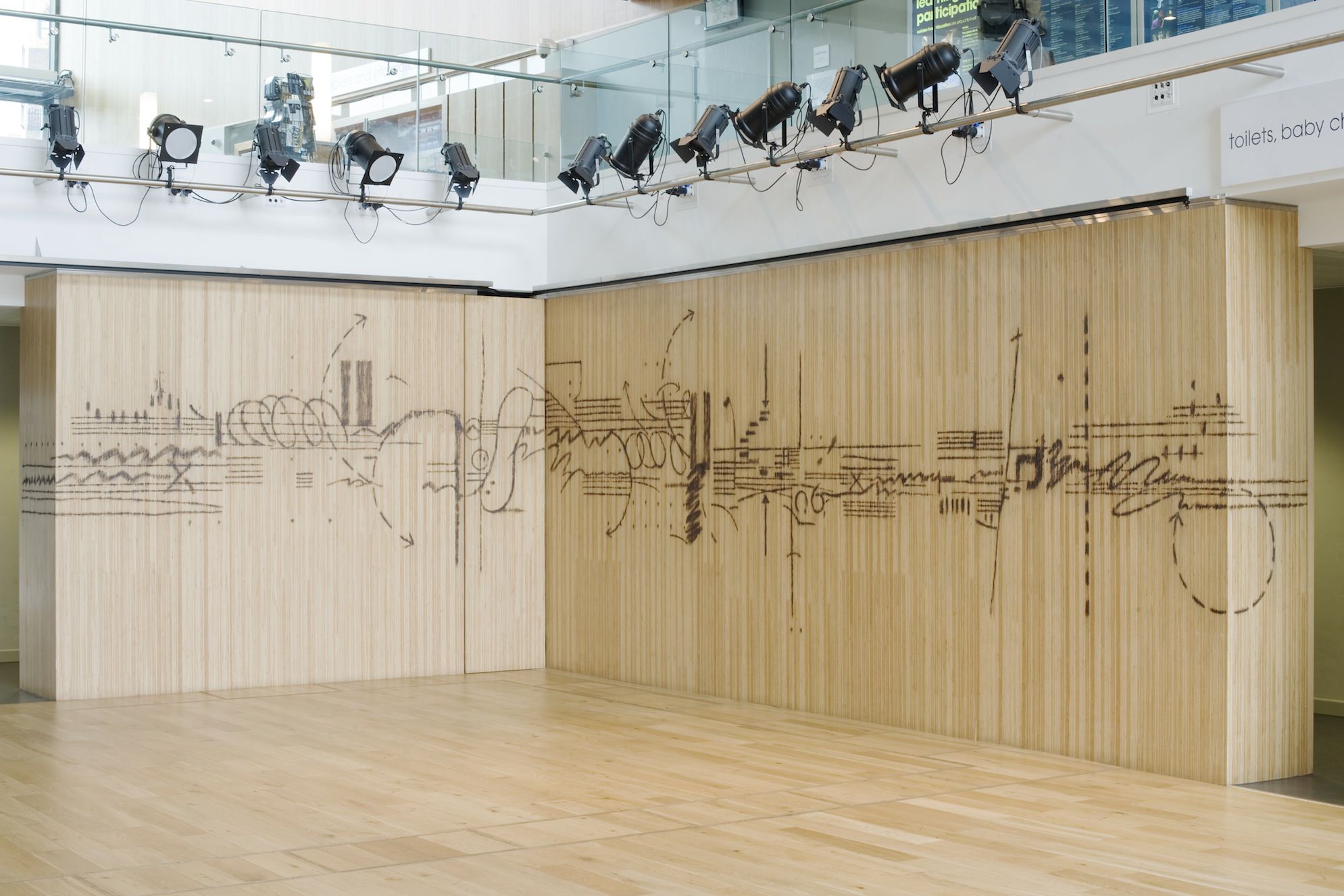
Synopsis
Bristol City Council is currently in the process of completing a number of new schools in the City under the Building Schools for the Future (BSF) programme. Included in this series is St Bedes Catholic College, a Roman Catholic college situated in north Bristol which serves the Clifton Diocese of north and central Bristol, north Somerset and south Gloucestershire.
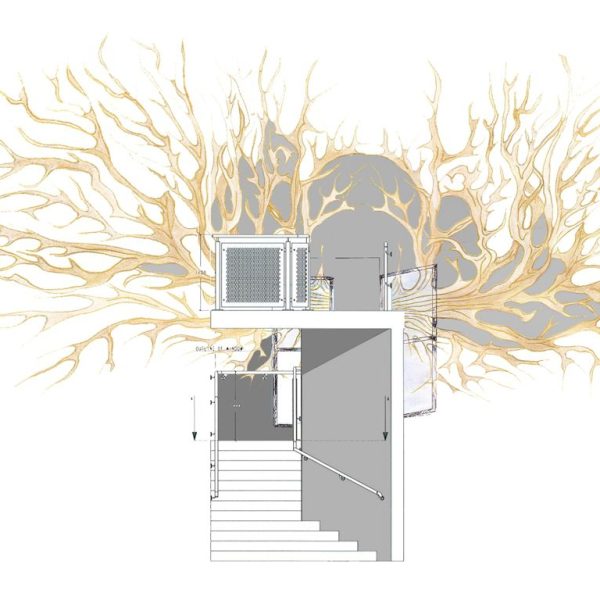

Description
Transpire is a new art work by artist Elpida Hadzi-Vasileva for St Bedes and was installed in August 2010. Developed over the course of a year, and with an intensive 3 month period on site, the work comprises a magnificent 24ct gold-leaf tree form. Highly sensitive to changes in the ambient light the artwork was designed for a key stairwell where its entwined roots and branches extend over the ceiling, walls and windows, transforming a school stairwell into a magical internal space.
Highly sensitive to changes in the ambient light the artwork was designed for a key stairwell where its entwined roots and branches extend over the ceiling, walls and windows, transforming a school stairwell into a magical internal space. The tree, a metaphor for life, knowledge, and wisdom connects the rich inside space with incredible views of the landscape beyond.
Transpire is a response to the history, traditions and culture of the school, developed with the input of students, and staff, and working closely with the development architect. The adaptation of traditional techniques for contemporary settings, in this case Baroque stucco work and gilding, is not only typical of Hadzi-Vasileva’s work, but here reflects the sentiments of self-confidence, vitality, freedom and spiritual ecstasy common to that era. Transpire attempts to explore the tensions between and within spaces, evoking a sense of mystery and complexity between that which lies beneath and that which manifests itself above.
Stucco Modelling: With the assistance of Matthew Odonovan.
Gilding and Finishing: With the assistance of Teresa Llewellyn
Elpida Hadzi-Vasileva
Elpida Hadzi-Vasileva is a Macedonian born artist, living in the United Kingdom, who creates ambitious sculptural works and site-specific installations. Working with materials that are unusual, precious, ordinary and ephemeral, from organic materials and foodstuffs to gold leaf, Hadzi-Vasileva’s practice questions notions of death, identity and beauty. Central to the artist’s approach is an interest in responding to the particularities of a given location, its history, environment and communities.
Elpida graduated from Glasgow School of Art in 1996, with 1st Class Honours and was awarded an MA in Sculpture at the Royal College of Art, London in 1998. Her work has been extensively commissioned and exhibited nationally and internationally. Exhibitions include: ‘me, you & them’ (51st Venice Biennale), ‘Butterflies in the Stomach’ (L’H du Siege, France), ‘Time Stands Still’ (Kilmainham Gaol Museum, Dublin). She has taken part in a number of European residency programmes including at Pied a Terre (London), ArtSway (New Forest), Gloucester Cathedral, Irish Museum of Modern Art (Dublin) and Berwick Gymnasium Fellowship. She has also worked on a number of public and private art commissions including: ‘Breath’ (Cambridge), ‘Reason D’ete’ (Bath), ‘Transpire’ (St Bede’s Catholic College, Bristol), ‘We Are Shadows’ (Unit2, London), ‘Life Cycle’ (Bristol), ‘Re|Sort’ (Fabrica Gallery, Brighton), ‘Ambush’ (The New Forest), Reoccurring Undulation (Towner gallery, Eastbourne). She has won many awards, including The Pollock Krasner Foundation (USA), Arts Council of England (UK), Ministry of Culture (Macedonia), September 7 Award (given by Kavadarci her city of birth), European Culture Foundation (The Netherlands).
Art and Sacred Places
Art and Sacred Places promotes interaction between religion and art, largely by siting contemporary art in sacred places. It engages new audiences by exploring the relationship between art and spirituality, encouraging debate and understanding.
Art and Sacred Places works with leading and emerging artists to make new works of contemporary art in response to sacred sites and their communities. The organisation is non-denominational and embraces all religions. It celebrates and encourages the interaction of art and religion.
